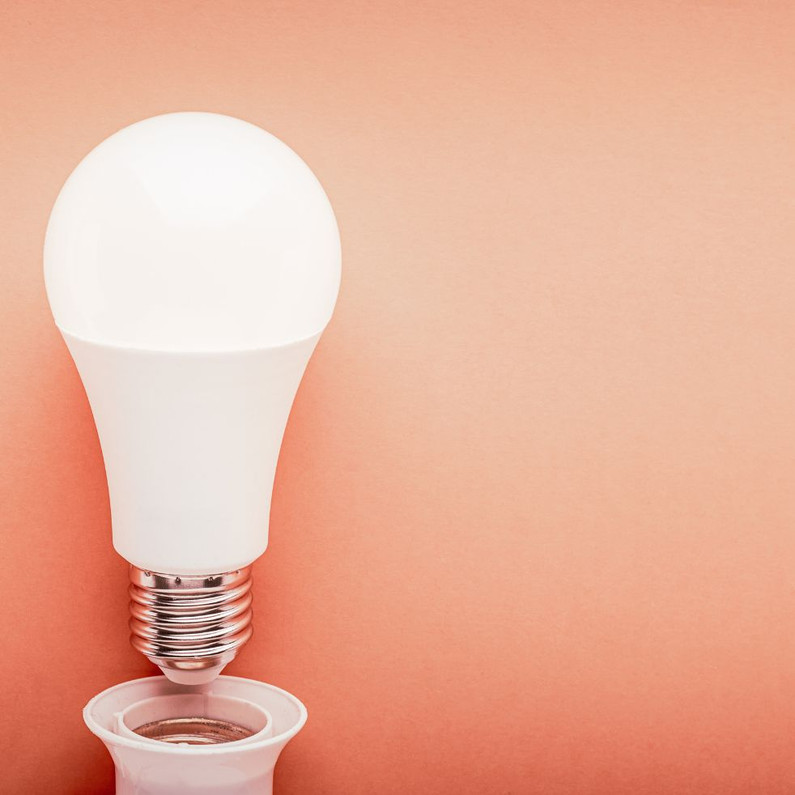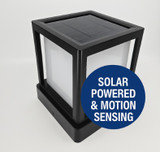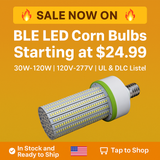LED vs. Incandescent Lightbulbs: What Is the Difference?
LED and incandescent lightbulbs are common lighting choices in commercial establishments. But besides giving off light, these bulbs are quite different. And to understand the differences between these options, check out this helpful guide.
What Is a LED Light Bulb?
A LED light bulb is a light-emitting diode that works by passing an electrical current through a microchip. This illuminates the bulb, resulting in visible light. LED bulbs are energy-efficient and last a long time.
What Is an Incandescent Light Bulb?
An incandescent light bulb is a bulb that utilizes electricity to heat a wire until it’s hot enough to emit light. This lighting selection is standard in commercial businesses because they’re easy to install and cheap. However, this guide will uncover the drawbacks of this bulb option.
Difference Between LED and Incandescent
When assessing LED and incandescent lightbulbs, the main difference between the two is the way they emit light. Incandescent is your classic bulb as they rely on electricity to heat a wire that eventually generates light. LEDs contain semi-conductive material that allows a current to pass through electrodes, emitting visible light.
Pros and Cons: LED Lightbulbs
LED lighting is one of the best lighting options for various applications. However, it’s best to assess the pros and cons of this light selection.
Pros
- Long lifespan. Did you know that the average lifespan of a LED light bulb is 50,000 hours? With this factor, LEDs are superior to typical light bulbs. You can go a long time without needing to replace the bulb.
- Energy efficient. LED bulbs use less energy and power than traditional light bulbs. Given the long lifespan, you use fewer bulbs as they don’t need frequent replacements, reducing carbon emissions.
- Illuminate quickly. Some light bulbs flicker when you turn them on. Luckily, LEDs turn on quickly without any flickering! This characteristic is ideal if you are frequently switching on and off lights.
- Thrive in cold conditions. Incandescent bulbs don’t operate well in cold weather. When temperatures drop, traditional bulbs require a higher voltage to start, decreasing the light’s intensity. In comparison, LEDs work better in cold conditions.
- Design flexibility. LEDs are small, and you can use them in various lighting applications. From light strips to bulbs, the illumination possibilities are virtually endless.
Cons
- Higher up-front cost. The initial cost of a LED light bulb is more expensive than an incandescent bulb. However, the energy efficiency and long lifespan make LEDs a better investment because you save money in the long run.
- Not dimmer compatible. Typically, LED lights are not dimmer compatible because they illuminate quickly. If you want this feature, the bulb must match a LED-compatible dimmer.
- Directional lighting. Instead of illuminating in various directions, LED offers directional lighting. However, many light bulbs have a frosting coat that helps distribute light throughout the unit.
- Fail under heat. Exposure to extreme heat can cause the light bulb to fail. Continuous exposure will shorten their lifespan and require you to replace the bulb sooner.
- Emit more blue light. LED bulbs emit more blue light than incandescent bulbs. This light can disrupt your circadian rhythm, affecting your quality of sleep.
Best Places for LEDs
Despite a few drawbacks of LED bulbs, they’re still an excellent choice for lighting. They’re ideal for commercial buildings such as offices, warehouses, restaurants, and healthcare facilities. Business owners can purchase industrial LED light fixtures for their establishment and experience the benefits of this lighting selection.
Pros and Cons: Incandescent Lightbulbs
Incandescent lightbulbs are one of the most common lighting selections. Like LED bulbs, it’s essential to review the pros and cons of this bulb option.
Pros
- Controllable. You can control incandescent bulbs with a dimmer. This characteristic is attractive to many businesses (such as restaurants that dim the lights in dining areas).
- Cheap. Compared to LED bulbs, this lighting choice has a lower up-front cost. The average 60KW bulb costs three dollars compared to five dollars for a LED bulb.
- Produces warm color. Incandescent lighting emits a warmer color. Unlike LEDs emitting blue light (that creates a cooler appearance), the color is ideal in various settings.
- Warm source of light. Along with a warm color, it also serves as a warm light source. In colder months, the bulbs can raise the temperature in small spaces by two degrees.
- Higher light output. Instead of directional lighting, incandescent bulbs offer higher light output, meaning they can better illuminate a room.
Cons
- Not energy efficient. The heat inside the bulb wastes energy because the purpose of the bulb is to emit light. Given that it also produces heat, a significant portion of the energy goes towards this initiative. Thus, they are less energy efficient than LEDs.
- Short lifespan. The average lifespan of this bulb is 1,000 hours. Frequent replacements are typical for this bulb option.
- High operating cost. The short lifespan leads to more replacements. When assessing the overall cost, it’s expensive to maintain incandescent bulb lighting.
- Fragile. Incandescent bulbs are very fragile, and handling them with care is essential.
- Not ideal for warmer months. The warm color and light source work for colder months but can make hot months uncomfortable. The extra heat may require people to use air conditioning to cool the room.
Best Places for Incandescent Bulbs
Although incandescent bulbs are not ideal as significant lighting sources, there are still ways to incorporate them in commercial settings. Desk lamps, closet lighting, and accent lighting work in various applications.
For example, incandescent light bulbs in a cleaning supply closet are a good choice because people are unlikely to occupy the room for hours at a time. Incandescent lights are perfect for areas that need a fast and inexpensive light source.
What Lighting Source Should You Choose?
Depending on the application, you may seek LED or incandescent bulbs for different reasons. However, if you’re interested in a stable source for your business, you should consider LED bulbs. You won’t have to worry about frequent replacements or lighting issues.
If you’re leaning towards incandescent bulbs, this lighting is suitable for minor applications. The short lifespan is perfect for rooms and areas with minimal use. As previously mentioned, it’s great for closet and desk lighting.
Achieve the Best Lighting Today
When you need the best LED lighting for your business, you must seek the best company. Induction Lighting Fixtures is a quality company for all your industrial lighting needs. We can design the right package for your establishment. Start your order by calling us at (855)-453-2852 today!

Recent Posts
-
How Long Will Solar Powered Lighting Operate in the Rain?
How Solar Light Fixtures Can Run for 10 Rainy Days If you’ve ever wondered how a Commercial solar li …Jul 30th 2025 -
Spotlight - The IL-SPG54 Smart Solar Walkway Light: Where Performance Meets Simplicity
Introducing the IL-SPG54 Smart Solar Walkway Light: Where Performance Meets Simplicity When it comes …Jun 16th 2025 -
Corn Bulb Sale - While supplies last!
⚡ Limited Time Sale – BLE Series Corn Lamps Starting at $24.99! Stock up now while supplies last – p …Jun 11th 2025






